The 2021 NFL Draft has introduced an infusion of talent for NFL rosters and fantasy squads alike. Quarterbacks like Matt Ryan, Tua Tagovailoa and Jalen Hurts saw their teams draft top-tier pass-catchers to bolster their 2021 outlooks.
Subscribe to
But for every rookie added to the NFL player pool, one less job remains available for veterans and young players who have yet to earn long-term security in the league. No matter how long an established player has fought off the next generation at their position, many will have to do it again this year.
As such, it's time to go through the 2021 rookie landing spots with an eye on the fantasy football implications for veteran players at each position. We'll also note where teams decided not to add to positions of need, leaving more opportunity for current players on the roster.
QUARTERBACKS
Several NFL quarterbacks will enjoy massive upgrades/additions at the receiver position thanks to the draft. The likes of Kyle Pitts, Ja’Marr Chase, Jaylen Waddle, DeVonta Smith, Kadarius Toney, Elijah Moore, Rondale Moore, Terrace Marshall Jr. and Dyami Brown all should contribute right away, raising the fantasy ceiling of their quarterbacks in 2021.
Lamar Jackson is arguably the biggest QB winner post-draft because the Baltimore Ravens finally got him some dogs on the outside in Rashod Bateman and Tylan Wallace. Jackson was desperate for playmakers on the perimeter, so hats off to the Ravens for satisfying a crucial team need.
Last season, Ravens wide receivers ranked 31st in contested catch rate (32%). Bateman finished fourth in contested catch rate (62%) in 2019, and Wallace ranks first in total contested catches since 2017.
Investing a significant amount of draft capital into the WR position — specifically to boundary pass-catchers that can play on the outside — is telling for an offense that has predominantly focused on passing over the middle of the field. Adding two dynamic receivers will add another wrinkle into the offense that will put Jackson back into the MVP conversation.
After returning from COVID-19, Jackson averaged 27.5 fantasy points per game (second), ranked third in big-time throw rate (8.6%) and finished eighth in PFF passing grade (82.4) from Weeks 13-17.
Ravens passing game just got DANGEROUS???????? pic.twitter.com/dKDmy8V4vG
— PFF (@PFF) May 3, 2021
Ryan Tannehill and Jameis Winston are two of the veteran quarterbacks who didn’t get much help. Both teams entered the draft with major holes to fill in the pass-catching department, but neither added any worthy contributors. The Titans didn’t add any WRs until Day 3 (Dez Fitzpatrick, Racey McMath), and the Saints waited until Round 7 (Kawaan Baker).
RUNNING BACKS
The “Big Three” rookie running backs finally found their NFL homes, and two landed on squads where there’s likely to be some sort of timeshare to start the season. Still, we can't stress enough how significantly draft capital matters at the running back position — Javonte Williams and Travis Etienne are going to be featured backs sooner rather than later. I investigated this topic last summer in a piece titled “Expectations for rookie RBs to breakout.”
Etienne’s experience as a goal-line back (most carries inside the 5-yard line since 2018) combined with his receiving prowess (12% target share last season) ensure that even just 12-15 touches per game will be of the fantasy-friendly variety.
James Robinson’s stock was drastically hit by the addition of Etienne, and anybody holding out hope that J-Rob is still going to retain any kind of consistent fantasy value is going to be extremely disappointed next season. The new coaching staff has no attachments to him, and the volume he received last season that vaulted him to RB1 status is nothing more than a distant memory.
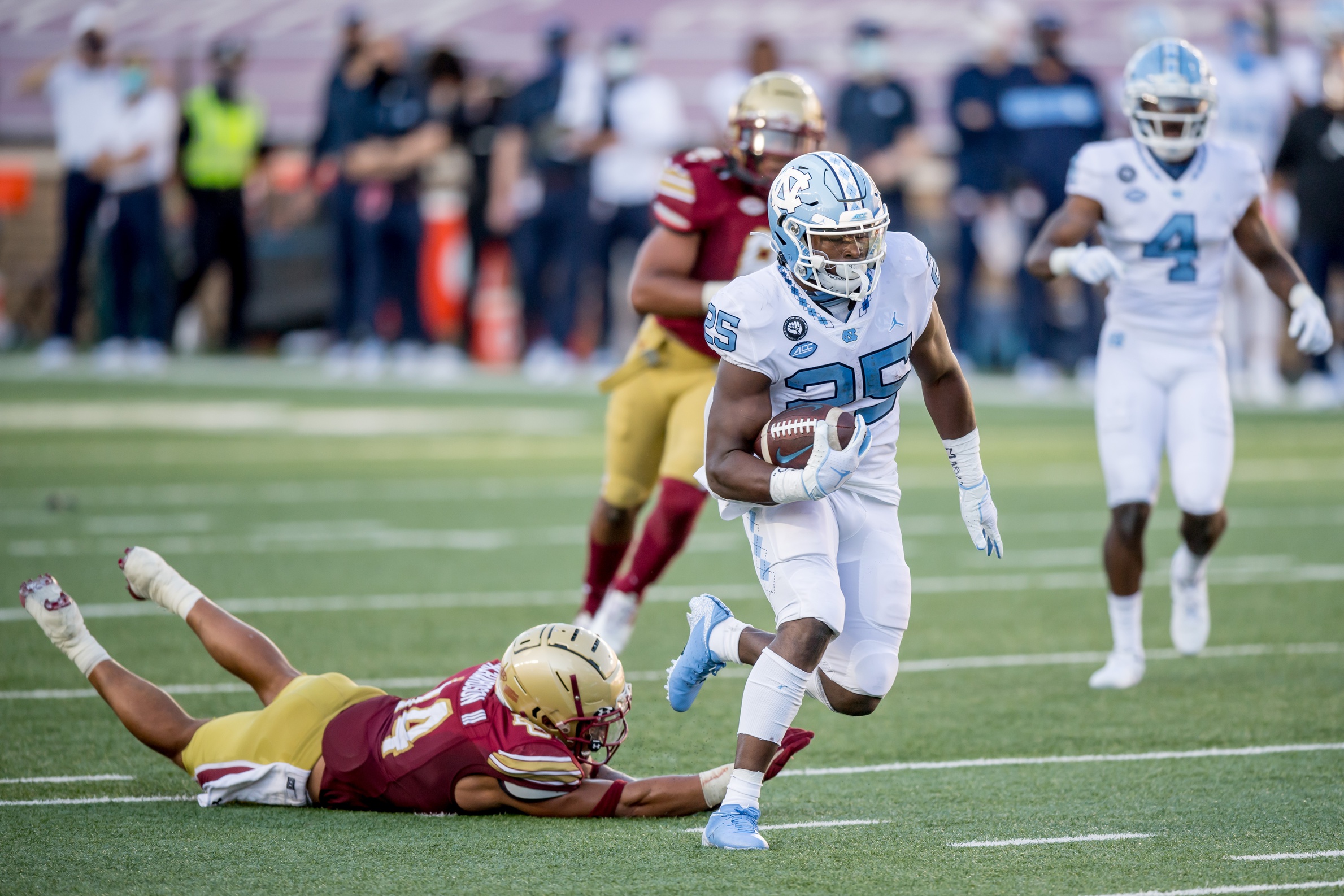
Melvin Gordon III never saw a 60-plus percent snap share last season in games when Phillip Lindsay was healthy (not including games with Kendall Hinton at QB). That suggests Gordon and William will operate in some kind of 60-40 snap split, which should be more than enough for Williams to prove he is the more worthy RB1.
After all, Williams only saw a 48% snap share in his final season at UNC while splitting time with Michael Carter. If any running back can stand out in an RBBC, it’s Williams.
Joe Mixon emerged as a big winner after the draft when the Bengals added to their offensive line and drafted Giovani Bernard’s replacement, Chris Evans, in the seventh round.
All indications are that Mixon is going to be a touch monster next year (23.3 touches per game last year with Gio), and his efficiency should increase behind a revamped offensive line. The addition of tackle Riley Reiff in free agency and guard Jackson Carman is enough to creep the Bengals’ OL back to average.
The Chargers also invested heavily into their offensive line during the draft, which earned them Ben Linsey’s No. 1 rank as the most improved OL from last season. Austin Ekeler is looking mighty fine in the second round of best-ball drafts.
Austin Ekeler Facts
RB4 in 2019
RB7 in 2020 Week 1-3 before his injury
RB7 in 2020 Week 12-16 after his injury
LAC didn't draft a back until Round 6
LAC had the worst run blocking OL in 2020
LAC added Corey Linsley, Matt Feiler and drafted Rashawn Slater R1Draft Austin Ekeler
— Nathan Jahnke (@PFF_NateJahnke) May 3, 2021
The same can be said for Clyde Edwards-Helaire with the Kansas City offensive line seemingly going from broke to rich in a few short months.
The Philadelphia Eagles drafted Kenneth Gainwell in the fifth round, and he should dramatically affect Miles Sanders’ role in the passing game. Gainwell has already been dubbed the team's “Nyheim Hines,” per head coach Nick Sirianni. Hines finished third in receptions at the running back position last season (64).
The Miami Dolphins predictably did not draft a running back until the seventh round (Gerrid Doaks), which is a huge win for Myles Gaskin. He appears locked and loaded to resume the RB1 status he earned last season when healthy.
The Arizona Cardinals were another team rumored to be in the market for a running back but passed. The backfield belongs to Chase Edmonds and James Conner, with my lean toward Edmonds being the more the featured player.
Still, it’s important to call out that the addition of Rondale Moore may dampen expectations on the receiving volume for any Cardinals running back. Moore’s YAC-ability should draw targets close to the line of scrimmage, an overlap that will likely limit RB receiving production. Not to mention, Kyler Murray’s mobility already makes RB targets scarce.
The other concern for Edmonds is his lack of potential goal-line work. Seventy percent of Arizona's carries inside the 5-yard line are available, which presents a golden opportunity for Edmonds. Over the past two seasons, Edmonds has only one goal-line carry. Since 2018, Conner has 32.
The Atlanta Falcons failed to draft a running back, signing only UDFA Javian Hawkins. Although Hawkins has some nice sleeper appeal, he's not a legitimate threat to siphon major touches from Mike Davis.
Big Mike looks poised to be solid fantasy contributor for a second straight year. He does not generate explosive plays, but he’s a capable pass-catcher and should see plenty of goal-line touches in a high-powered offense.
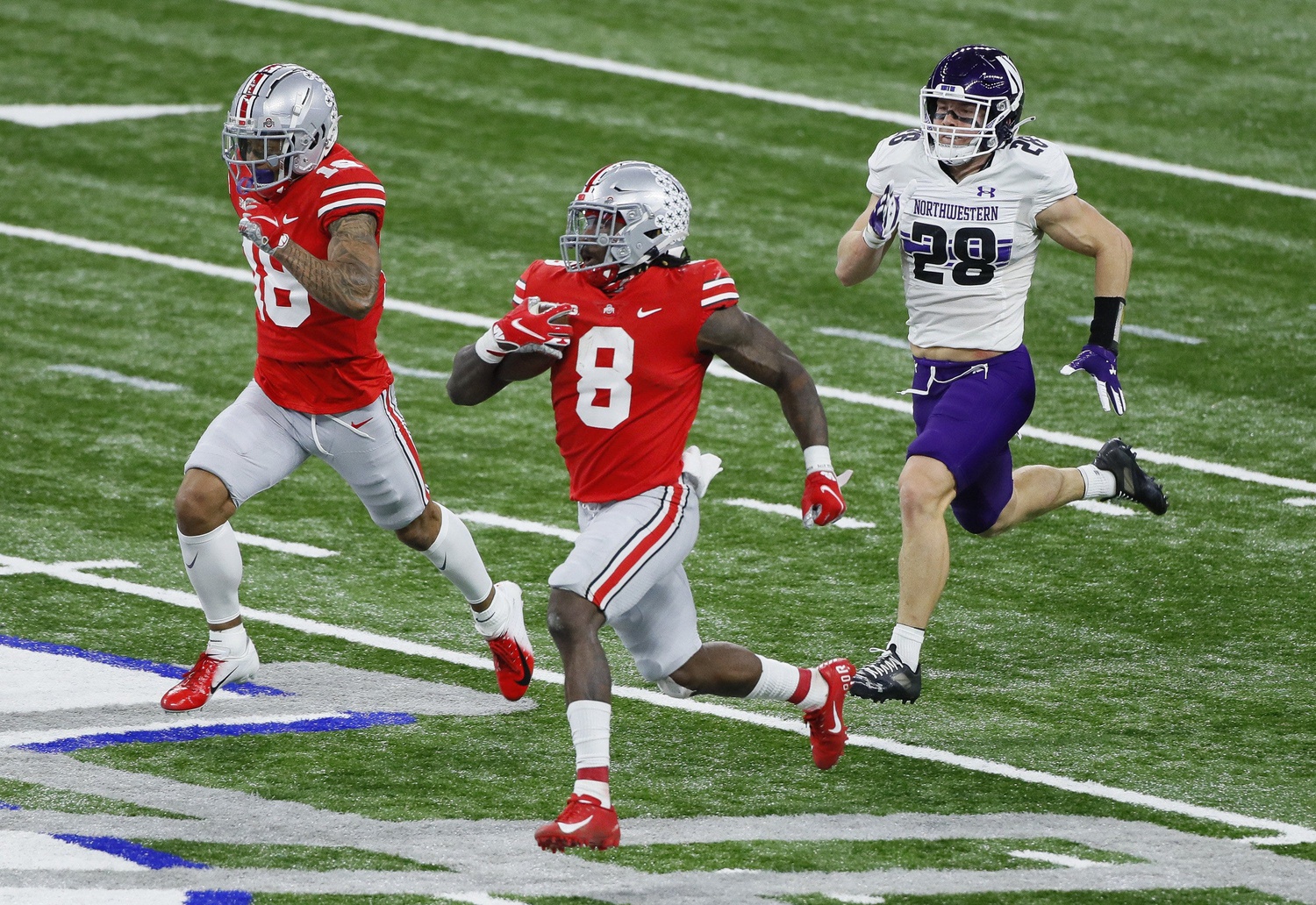
© Adam Cairns/Columbus Dispatch via Imagn Content Services, LLC
I labeled Raheem Mostert as a dynasty buy before the 2021 NFL Draft, and things didn’t quite play out in my favor. Not only did the 49ers draft Trey Sermon in the third round, but they also selected one of my favorite rookies, Elijah Mitchell, a few rounds later. I fully expect Mostert to be the Day 1 starter, but his chances of hanging onto the role all year are dwindling.
The best approach to this backfield would be to draft whichever RB owns the cheaper price tag.
The Jets added running back Michael Carter (not to be confused with DB Michael Carter II) early on Day 3, which destroys any fantasy value for last year’s fourth-round pick, La’Mical Perine. The new staff has no ties to him, so the backfield will most likely lean on Carter and Tevin Coleman until the latter indefinitely gets hurt.
Carter might not see a workhorse role with the Jets like many are hoping, but I like his upside as a receiver. He’s also an explosive runner, which will hopefully set him apart from a much older Coleman.
The Patriots selected Rhamondre Stevenson in the fourth round, and he joins a backfield that fantasy gamers have come to know too well as one that can be quite frustrating to decipher. Adding the massive back is a tell-tale sign that Sony Michel’s days are numbered in New England — the team also declined Michel’s fifth-year option.
Either way, Damien Harris has to be hands-off in drafts despite his success running the football last season. There’s no telling how this backfield will shake out, and Harris doesn’t have a ton of fantasy upside with Cam Newton vulturing touchdowns.
I’d much rather take a shot on Stevenson several rounds later and hope that Belichick uses him as a boomer version of LeGarrette Blount. The Oklahoma senior ranks second since 2019 in yards after contact per attempt (4.7) among 2021 draft-eligible running backs
He loves to hit people, so the comparison goes without saying.
#Patriots fans – meet your new power-back, Rhamondre Stevensonpic.twitter.com/SKRGRdFR8D
— PFF NE Patriots (@PFF_Patriots) May 1, 2021
WIDE RECEIVERS/TIGHT ENDS
The Saints and Titans didn’t add any significant pass-catchers in this year’s draft, so we can expect that all fantasy production will be coming from in-house. Ergo, A.J. Brown and Michael Thomas need to be priority WR targets in the second and third rounds of offseason best ball drafts. Brown has a legitimate shot to hit 200 targets in a 17-game season, and Thomas is loaded up to regain elite 2019 form.
The Saints’ No. 1 wide receiver is being vastly underrated because of the team's ambiguous QB situation, but I think he shows out regardless of whether it's Jameis Winston (my prediction) or Taysom Hill under center.
Thomas had an excellent stretch of games last season from Weeks 10-14 when he commanded a 32% target share and earned an 88.3 PFF receiving grade. And despite all the injuries, Thomas still finished 15th overall in yards per route run (2.14).
The upside of having a capable downfield passer is also not being weighed into Thomas’ outlook enough. Winston’s arm talent alone gives Thomas a higher ceiling on a per-target basis than he would have with Drew Brees under center for another year.
Brees finished as the league's 23rd-ranked passer, and his average depth of target (6.5) fell to the lowest of his career. Winston holds the league’s highest aDOT since 2019.
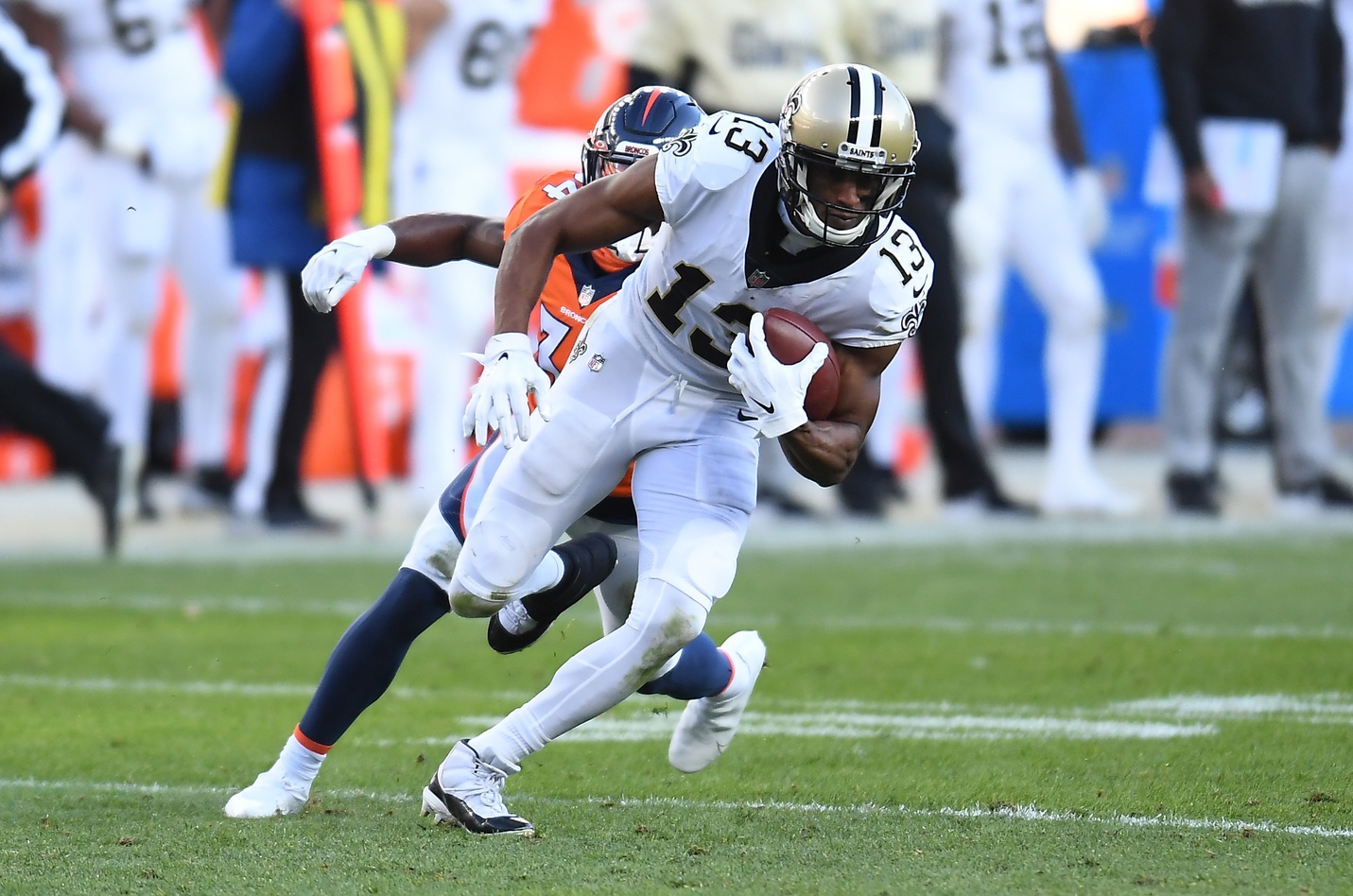
Thomas has the highest catch rate (73.9%) and second-highest passer rating generated (144.7) on 20-plus yard targets since the start of 2018.
It wasn’t long ago that we saw Winston elevate two top-five fantasy WRs — Chris Godwin and Mike Evans both finished top-five in fantasy points per game in 2019.
Among the ancillary Saints receivers, Deonte Harris is the most intriguing prospect for me. He had a huge game in the Wild Card Round of the playoffs last season — seven catches for 83 yards — and his final PFF receiving grade (79.5) ranked 23rd in the league. As a dynamic returner (top-eight in punt return average the last two seasons), there’s plenty to like about Harris entering Year 3.
Tre’Quan Smith is likely to be the popular Saints receiver to target behind Thomas, but he’s shown almost zero progression throughout his three professional seasons. He had a unique opportunity to step up in Thomas’ place last year but ended the year with his worst PFF grade (61.9) to date.
Free-agent signees Josh Reynolds and Marcus Johnson appear to be the next veterans up in the targeting pecking order in Nashville. The consensus appears to believe in Reynolds as the No. 2, but I’m not entirely convinced. His contract is just a one-year deal worth up to $1.75 million, and he has been nothing more than a “JAG” his entire NFL career. He’s a strong sell in dynasty formats based on his perceived value.
I’d actually rather take a late-round shot in best-ball formats on Johnson, who is a one-trick pony as a deep threat. His yards per reception (17.2) ranks seventh and aDOT (17.3) ranks fourth among all WRs since the start of 2019.
Both teams' projected starting tight ends project to see big bumps in targets next season. Adam Trautman led the NFL in catch rate (94%) and ranked third in yards after the catch per reception (7.7) as a rookie in 2020.
The Titans’ Anthony Firkser was a glorified slot receiver last season (71% slot snap rate), and his target rate on slot snaps was off the charts (80%), ranking first at the tight end position.
In the two games last season that Jonnu Smith saw a sub-50% snap share or missed entirely, Firkser averaged 17.7 fantasy points per game.
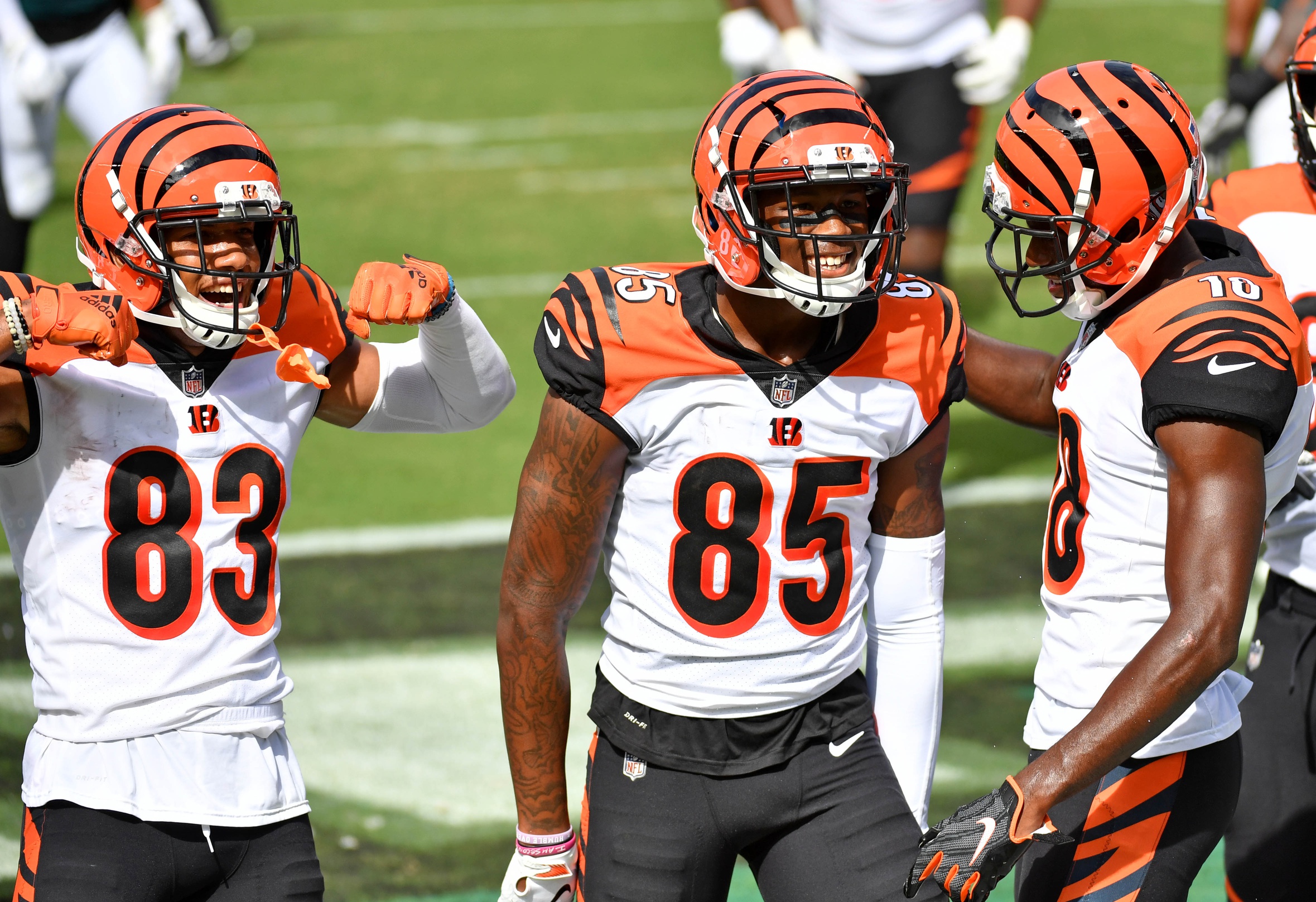
Ja’Marr Chase has the chance to break out in 2021, but I don’t think it makes players like Tyler Boyd and Tee Higgins less desirable. I fully expect Boyd to operate from the slot, and Chase shouldn’t be competing with him for low aDOT targets. Higgins’ upside is capped, but not to the extent that his falling ADP would signify. This offense is going to throw a ton in 2021, so we could easily see all three WRs crack the top-30. When in doubt, draft Bengals.
The addition of Jaylen Waddle and the free-agent signing of Will Fuller is an indicator to me that the Dolphins are probably looking to move away from DeVante Parker. The big-bodied receiver and Tua Tagovailoa showed zero chemistry last season (76.6 passer rating when targeted), and Miami looks dead set on prioritizing speed instead of size at the position.
Miami also added tight end Hunter Long in the draft, and he possesses a decent set of hands in his own right. Long led the nation in targets (89) and catches (57) while also finishing second in receiving yards in 2020, all career-high marks for the Boston College tight end. He’s most likely going to be regulated to TE2 duties behind Mike Gesicki, but he might be involved enough to make the veteran tight end even more difficult to rely on weekly.
Jalen Reagor was probably never meant to be a team’s No. 1 wide receiver, so I don’t think the addition of DeVonta Smith alters his fantasy outlook too drastically. A heavy target share isn’t to be expected, but he should deliver multiple splash weeks with his explosiveness, YAC upside and deep threat expertise. Last season, 46% of Jalen Hurts‘ passing attempts were thrown 10-plus yards, a mark that ranked No. 1 in the NFL.
Other high-profile rookie receivers, like Rashod Bateman, Elijah Moore, Terrace Marshall Jr. and Rondale Moore, will make it tougher to project uber-productive seasons from their new veteran teammates. Marquise Brown, Denzel Mims, Robby Anderson and Christian Kirk all have endured major hits to their fantasy stock.
One veteran name in particular that could also be negatively impacted but hasn’t been discussed enough is Giants wide receiver Sterling Shepard. Shepard has always been better as a slot receiver, but 2021 first-round pick Kadarius Toney spent the majority of his time in the slot at Florida. This could be a situation where Shepard is forced to play outside so the Giants can feature their prized gem inside.
The Chicago Bears had a terrific draft, and I believe they found themselves a future starter in Dazz Newsome. The UNC wideout spent the majority of his career in the slot, and I’d expect him to be the Bears’ guy inside this season, with Anthony Miller on the trade block.
Newsome didn’t post gaudy numbers in college playing alongside a plethora of NFL talent, but he was always elusive with the ball in his hands. He's a playmaker who cracked my list of the most dynamic and versatile rookies in the 2021 NFL Draft class.
Newsome is PFF’s fifth-highest-graded punt-returner over the past three seasons (91.0) and owns the second-highest missed tackle rate per touch (30%) since 2018.
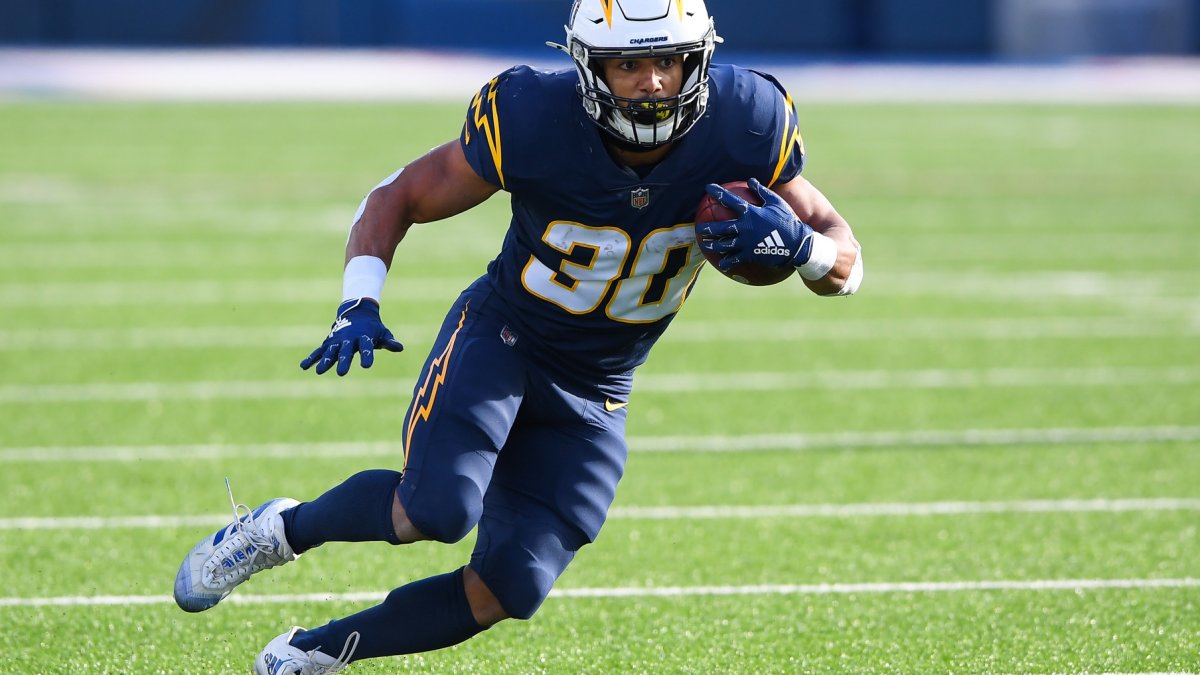


 © 2025 PFF - all rights reserved.
© 2025 PFF - all rights reserved.